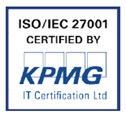IP Checklist for Esports Player Contracts
30 November 2021
Author: Wilhelm Sanmark
1 Increased Need for Proper IP Provisions
For the past few years, esports has grown exponentially worldwide in viewership, engagement, sponsorship, and investment capital. This means that the need for a more robust legal structure and agreements in esports has also soared. However, many esports organisations and players have not responded to the increased need for legal expertise. The purpose of this blog post is to provide general information on IP provisions that are typically relevant when signing players to an organisation or team.
2 How to Agree on IPR
Agree about everything relevant in writing and, in order to avoid ambiguities, be specific. It is much easier for both parties to enforce the contract and avoid misunderstandings in the first place if things are agreed upon in writing. Make sure to outline diligently all rights and obligations, including IP-related ones, when negotiating or drafting the contract. The player will not necessarily know what is expected from them unless it is specifically agreed upon. Same goes for the organisation; the player should not expect any help or benefits that are not agreed upon in writing.
2.1 Assignment or Licensing?
IPR are generally bestowed on the person who creates them. The person who owns the IPR generally also has the right to choose how the IPR are used. For example, a player has created a profile picture/logo for themself. The player owns the copyright to the picture and can choose who gets to utilise it. The organisation that the player is playing for may want to use the player’s profile picture/logo for marketing purposes; how should it be done?
There are two main ways of giving someone the legal right to use IP: assignment (transfer of ownership) and licensing. In this example, it makes hardly any sense to assign the rights to the player’s profile picture/logo to the organisation. By doing so, the organisation would perpetually (even after termination of the player contract) be in control of how the player and everyone else would be allowed to use the profile picture. It is simply not a suitable solution, since the organisation likely does not need the picture after the termination of the contract, and in return, the player does need it. The solution is for the player to license the right to use the picture to the organisation. When licensing IPR, it is important to outline what the IPR can be used for and for how long. The benefit of licensing compared to transferring ownership is that licensing provisions can be very specific and thus be a better tool for the job.
There certainly is a time and a place for assigning ownership of IPR, but that is rarely the case in an esports player contract. For instance, it may be in the player’s interest to gain ownership of pictures taken of the player themself. That way the player can perpetually utilise the picture for, e.g. marketing purposes or simply as a profile picture on social media. This can of course also be achieved through a licensing deal, which further speaks for licensing being the more versatile option. Monetisation opportunities of the IPR is usually what differentiates an extensive license and assignment.
2.2 Employee or Independent Contractor?
The first thing to note about IP provisions in esports player contracts is that they do have an effect on whether the player is considered an employee or an independent contractor. The more the IP provisions obligate the player to act in a certain way (such as use a team tag in game, wear certain clothing, use certain pictures on social media, etc.), the more likely it is that the player is considered an employee of the organisation. Hiring an employee is generally much more costly than hiring an independent contractor due to statutory benefits and protection that an employee is entitled to. Agreeing on the player’s role as an independent contractor in the player contract may be beneficial, as it indicates the intent of the parties. However, such clause is typically not valid if the contractual obligations (including IP) and the relationship dynamic implies otherwise.
3 Which IPR Do You Need to Agree on in the Player Contract?
Everything relevant to either party. As already mentioned, IP rights and obligations can go both ways in esports player contracts. For example, the player may be required to use a certain banner provided by the organisation on social media, and in return the organisation may be required to promote the player’s pictures or posts on social media; both parties have IP-related contractual obligations. Below is listed some IP that is generally most essential for esports player contracts. In addition, both players and organisations usually also have contracts with third parties that can be quite IPR-heavy (e.g. sponsorship agreements). While those agreements are significant, they fall outside the scope of this blog post.
3.1 Logos
The right and/or the obligation to use a logo is perhaps the most apparent IPR provision in a player contract. Almost every established esports organisation has their own logo, and it is typically what people recognise and associate with the organisation besides the name of the organisation. A logo is generally protected as a trademark. Occasionally, the player contract could also stipulate something about a player’s own logo if there is one. Agreeing about the use of sponsors’ logos is generally also a good idea. This goes both for the organisation’s sponsors and for the player’s personal sponsors. When, where, how, and for how long logos should be used are relevant questions to address in the player contract.
3.2 Player Name (“Gamer Tag”)
Much like the logo is usually characteristic for an organisation, the player name tends to be the most characteristic IP of a player. Just like a logo, a player name can generally be registered as a trademark. By registering the player name as a trademark, the player and (by contract) the organisation can better protect the use of the name and make sure that all the proceeds generated by the name go to the right person. It is important to outline all details regarding the use of the player name in the player contract. The player contract should detail when, where, how, and for how long the name can be utilised by the organisation. For example, the player likely wants the organisation’s right to utilise and make money off the name to end when the player contract ends. Otherwise, the player could have problems signing with another organisation.
3.3 Pictures
We already talked about a few examples of IP that typically exists before signing a player contract, but what about IP that does not exist yet? Pictures are something that both the player and the organisation may want to have access to from each other. The organisation can use the player’s pictures for marketing purposes and the player may want to use the organisation’s pictures for personal branding. As was explained above, licensing is usually the sensible option when it comes to pictures. Just make sure to detail when, where, how, and for how long the picture can be utilised.
3.4 Streaming and Content Creation
Perhaps the most distinguishing IP-related feature of esports player contracts is streaming rights and obligations. Players can attract large audiences and make a significant income by streaming, meaning that organisations are naturally interested in tapping into it. The player and the organisation can agree about who gets ownership of the streaming content (by default it is the player streaming). They could also agree about an obligation to stream and/or sharing of revenue generated by streaming. Even if the organisation does not get a cut of the revenue, it may be in their interest that the player streams, as it provides exposure for the organisation and its sponsors. Again, it is critical to precisely detail all conditions relating to content creation in the player contract. Same goes for all kinds of other content too, especially video content.






